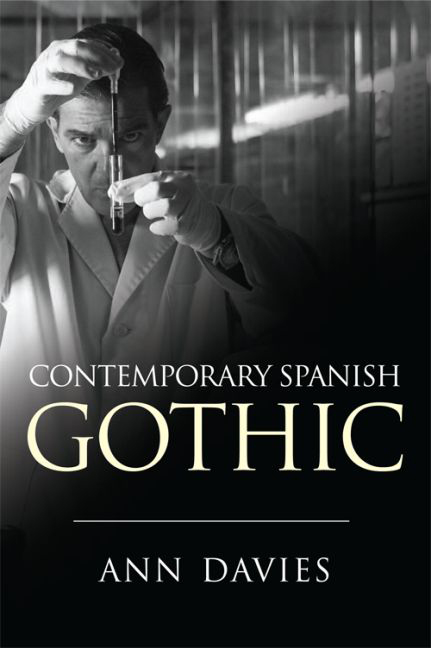Book contents
- Frontmatter
- Contents
- List of Figures
- Acknowledgements
- 1 Introduction
- 2 Heritage Gothic: Goya Biopics
- 3 The Gothic Bestseller: The Circulation of Excess
- 4 The Gothic House: Problematising the National Space
- 5 The Gothic Camera: Javier Aguirresarobe at Home and in Hollywood
- 6 Gothic Medicine: Written on the Body
- 7 Conclusion
- Filmography
- Bibliography
- Index
3 - The Gothic Bestseller: The Circulation of Excess
Published online by Cambridge University Press: 27 April 2017
- Frontmatter
- Contents
- List of Figures
- Acknowledgements
- 1 Introduction
- 2 Heritage Gothic: Goya Biopics
- 3 The Gothic Bestseller: The Circulation of Excess
- 4 The Gothic House: Problematising the National Space
- 5 The Gothic Camera: Javier Aguirresarobe at Home and in Hollywood
- 6 Gothic Medicine: Written on the Body
- 7 Conclusion
- Filmography
- Bibliography
- Index
Summary
One reason why the Gothic mode has been perennially concerned with the circulation of tales is because of the common device of the rediscovered manuscript that combines a mystery over origins, and thus authority and authenticity, with the undeniable tangibility of a document. Yet that tangibility itself may be fragile as documents crumble and perish or are lost. The fragility of the discovered manuscript is something that persists even in the two novels that are the subject of this chapter because the books which form the subject of each are subject to theft, forgery or fire. The lost-and- found nature of the discovered manuscript introduces doubt – how authentic is it? – but it also allows for tales of the past to be recirculated in new times for new generations. This motif occurred in that most seminal of Gothic novels, Walpole's The Castle of Otranto, and was repeated in many novels after that. This suggests the Gothic tale as a physical entity that, precisely because of its physicality, is able to endure across historical eras and thus functions as a form of cultural exchange across time as well as space. Even tales which appear to be transmitted orally need to be written down in order to be exchanged in this way. Yet these manuscripts may still prove fragile, as the decaying and partly illegible manuscript of Melmoth the Wanderer demonstrates.
My underlying premise of this chapter takes as its initial premise the Gothic interest in the circulation of tales in their physical form, with an emphasis on books as close cousins of the found manuscript. The Gothic interest in the book and its circulation persists today even though, or perhaps because, the equation of the book's text with its materiality is increasingly questioned with the rise of the e-book, the circulation of texts via the Internet, the efforts to preserve texts in digital form and the ability to read books on devices such as tablets and Kindles. Spooner (2014) has observed how the Gothic book is thriving in the digital age, partly through a stronger emphasis on graphics and a facilitation of interactivity on the part of the reader but also through a nostalgia for the book as physical artefact.
- Type
- Chapter
- Information
- Contemporary Spanish Gothic , pp. 54 - 83Publisher: Edinburgh University PressPrint publication year: 2016



